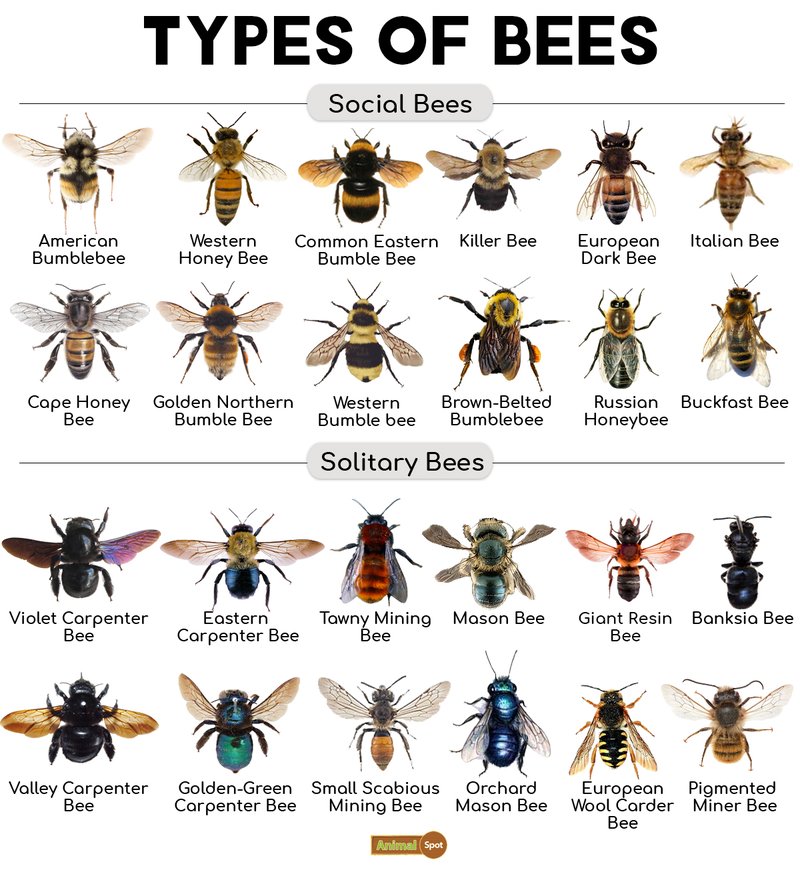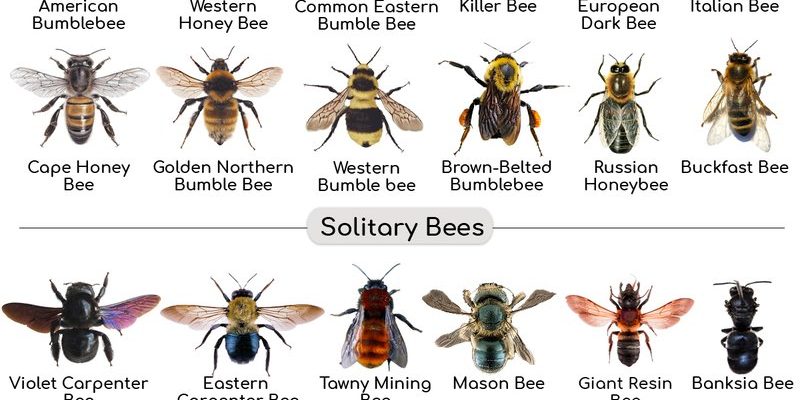
Mining bees belong to a different category entirely from honeybees and bumblebees. They might not produce sweet honey or build large hives, but they play a crucial role in our ecosystem. If you’re curious about what sets mining bees apart from other bee types, grab a cup of coffee, and let’s dive into the fascinating world of these ground-dwelling pollinators.
What Are Mining Bees?
Mining bees, scientifically known as Andrenidae, are solitary bees that commonly nest underground. Unlike honeybees, which live in large colonies, mining bees prefer a more independent lifestyle. Imagine them as the introverts of the bee world, happily burrowing into the soil to create their homes.
These bees typically emerge in early spring, just when the flowers begin to bloom. Their primary goal? Collect pollen and nectar to feed their young. They are often mistaken for other bee species due to their size and appearance, but their nesting habits set them apart drastically. While many bees are social and work together in groups, mining bees take a solo approach, which makes them unique and interesting.
Characteristics of Mining Bees
One of the most notable characteristics of mining bees is their size. They tend to be smaller than honeybees and bumblebees, usually measuring between 8 to 15 millimeters. Here’s the thing: they come in a variety of colors, from black to brown, and even yellow stripes in some species. This diversity is part of what makes them so fascinating.
Mining bees also have distinct behaviors. They are excellent foragers, and their bodies are specially adapted to collect pollen. If you look closely, you might see that their hind legs are often covered in fuzzy hairs, which help them transport pollen back to their nests. Plus, many mining bee species are great at flying short distances, making them efficient pollinators for nearby plants.
Mining Bees vs. Honeybees
You might be wondering how mining bees stack up against honeybees. Well, there are some key differences to note. First and foremost, honeybees are social creatures that live in hives, sometimes containing thousands of individuals. On the other hand, mining bees are solitary and prefer to live alone.
Another difference lies in their nests. Honeybees build intricate hives made from wax, while mining bees dig tunnels and chambers in the soil. This means that while honeybees can be seen swarming around hives, mining bees tend to be more discreet, quietly going about their business underground.
Additionally, honeybees produce honey as their primary food source, while mining bees focus on collecting pollen and nectar to feed their larvae. So, if you’re ever in your garden and see these tiny bees buzzing around, remember: they’re not here for the honey; they’re just doing their job, pollinating plants and helping our ecosystem thrive.
Mining Bees vs. Bumblebees
Let’s explore how mining bees differ from bumblebees. While both types of bees are important pollinators, they have very different lifestyles and nesting habits. Bumblebees are social creatures, too, but they live in smaller colonies compared to honeybees, usually consisting of a few hundred members.
Like honeybees, bumblebees also build nests, often in abandoned burrows or thick grass. This contrasts sharply with mining bees, which make their own tunnels in the ground. Plus, bumblebees are known for their large, fuzzy bodies and distinctive buzzing sound, while mining bees are often more understated in appearance and behavior.
Another important point is their foraging habits. Bumblebees can fly longer distances than mining bees and are often found visiting flowers at higher altitudes. On the flip side, mining bees tend to be more localized, which means they pollinate plants close to where they nest. Both types of bees contribute to the biodiversity of our planet, but they do so in different ways.
The Importance of Mining Bees
So, why should we care about mining bees? Honestly, their role in pollination is crucial for many flowering plants, including crops that we rely on for food. By gathering pollen and nectar, these bees help facilitate plant reproduction, leading to more fruits and seeds. Without them, we’d see a decline in plant diversity and food availability.
Moreover, mining bees are well adapted to various environments, including gardens, meadows, and even urban settings. They contribute significantly to the local ecosystem, making sure that plants continue to thrive. In fact, studies have shown that healthy populations of mining bees can improve crop yields, making them vital to our agriculture.
By creating habitats that support mining bee populations—like leaving some parts of your garden untended or planting native wildflowers—you can help promote their presence. Every little effort counts, and it’s a great way to show appreciation for these unsung heroes of the pollinator world.
How to Identify Mining Bees
Identifying mining bees can be a bit tricky, especially since they resemble other bee types. However, there are some telltale signs to look for. First, keep an eye out for solitary bees hovering close to the ground, often near bare patches of soil or sandy areas. If you see them disappearing into small holes in the ground, you’re likely looking at mining bees!
Another clue is their size and color. Mining bees are generally smaller and could be more slender than bumblebees. You might also notice that they often have furry bodies, which helps them collect and transport pollen. And while bumblebees are often fuzzy and chunky, mining bees are usually more streamlined.
Plus, their behavior can be a giveaway. If you spot bees darting back and forth, visiting flowers and then returning to the ground, you might be witnessing mining bees at work. Just remember to give them space; they’re busy helping our gardens flourish!
Conservation of Mining Bees
As we become more aware of the importance of pollinators, conservation efforts for mining bees are more essential than ever. Habitat loss, pesticides, and climate change pose significant threats to their populations. By supporting local initiatives that promote native plants and reduce chemical use, we can help protect these tiny pollinators.
Consider creating a bee-friendly garden by incorporating a variety of native flowers. These plants provide food and habitat for mining bees and other pollinators. Furthermore, leaving some areas of your garden untouched—with bare soil for nesting—can also make a big difference.
Together, we can make a positive impact on the environment and help keep mining bees thriving. Remember, every little action you take to support these incredible creatures counts towards a healthier ecosystem!
In conclusion, mining bees may not be the most well-known type of bee, but they play a crucial role in nature. Understanding the differences between mining bees and other bee types helps us appreciate their unique characteristics and the vital work they do in our gardens and ecosystems. So next time you’re out and about, keep an eye out for these fascinating little pollinators and give them a nod of appreciation!

